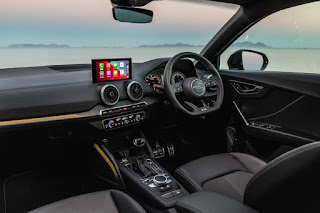
Dakar 2023 reached its quarter distance mark after a somewhat less dramatic Day 4 as the legends of the sport fought it out for car victory. Sebastien Loeb ultimately emerged victorious for the troubled Hunter team, mere seconds ahead of Stephane Peterhansel’s Audi, his teammate Carlos Sainz Sr. and Toyota Gazoo Racing SA’s overall leader, Nasser Al Attiyah.
There was also a dice throughout the motorcycle Day 4, as Joan Barreda Bort beat Honda teammate Pablo Quintanilla to the win. Daniel Sanders continues to lead the bikes overall, while South African FK Husqvarna rider Charan Moore leads the no back-up service Malle Moto Original class, and his teammate Mike Docherty is a very close second among the two wheeler rookies.
TUESDAY RESULTS CAME LATE
It took until late Tuesday evening for organisers to issue the Day 3 results following that thunderstorm curtailed stage. There was no change to the top of the car results, leaving Prodrive privateer Guerlain Chicherit to take the day from SA Toyota crew Henk Lategan and Brett Cummings, and Orlando Terranova’s Prodrive Hunter.

Nasser Al Attiyah - overall leader
In the overall results, Nasser Al Attiyah headed a Toyota 1-2 over Yazeed Al Rajhi with Stephane Peterhansel ‘s Audi third. South African Century drivers Brian Baragwanath and Mathieu Serradori sat fifth and sixth ahead of Giniel de Villiers’ Toyota in seventh. All four South African Red-Lined entries were still in the running too.
The major bike results for stage 3 did not change, bar Argentine Kevin Benavides’ KTM receiving a two minute penalty and dropping a place to third behind leader Aussie Daniel Sanders’ GasGas and KTM privateer Mason Klein.

Joan Barreda Bort
Botswana’s Ross Branch came in 15th, SA riders, Michael Docherty was 39th after a fall, Charan Moore 40th, Stuart Gregory, Kirsten Landman 79th, and Stevan Wilken 103rd. Sunderland led Klein and Benavides overall, with Branch 10th, Rookie leader Docherty 29th and Original leader Moore 36th.
US Red Bull lads, Austin Jones and Seth Quintero were declared a T3 side-by-side prototype 1-2 from Guilaume de Mevius. That left Quintero leading de Mevius overall. SA pair Geoff Minnitt was placed 15th, Eben Basson 17th, with Basson 16th and Minnitt 27th overall.
Brazilian Cristiano Batista scored a surprise T4 side-by side win from overall leader Marek Goczal and Rokas Bakiuska. Martin Macik’s Iveco took the truck win from Gert Huzink’s similar machine and overall leader Jaroslav Valtr’s Tatra. And Alexandre Giroud took another quad win from Moreno Flores and Juraj Verga. As Giraud led Verga and Pablo Copetti overall.
DAY 4 BATTLE OF THE GIANTS IN CARS
Wednesday’s 425 loop around Ha’il took in a bit of everything, starting in the dunes before moving onto tracks and later returning to the sand. The Dakar giants fought it out up front, as Stéphane Peterhansel and Edouard Boulanger’s Audi led early on from Sebastien Loeb, Al Attiyah, and Carlos Sainz Sr.
It was a tough morning for Century as Serradori and Loic Minaudier picked up a heating problem in and lost an hour before teammate Baragwanath also stopped for almost 50 minutes. Things went even worse for Prodrive, as both Orlando Terranova and Vaidotas Zala’s Hunters retired.

Stéphane Peterhansel
The other two Hunters were however in the thick of it. Loeb passed Peterhansel’s petrol electric Audi to lead at the final waypoint. Teammate Chicherit moved up to third from Sainz, but the second Hunter also hit trouble in the final sector, leaving Loeb to take the day in the team’s second stage win on the trot.
Loeb beat Peterhansel by 14 seconds, as Sainz pipped Al Attiyah for third. Al Rajhi was fifth from Lategan, Ekstrom, and Toyota Hilux trio Lucio Moraes, de Villiers and Eric van Loon. All of which means Attiyah continues to lead Al Rajhi by 18 minutes overall, with Peterhansel mere seconds behind in third from Sainz, Lategan, Moraes, de Villiers and Ekstrom.
A BIG DAY 4 BIKE DICE TOO
On the bikes, Mason Klein moved ahead of Adrien van Beveren’s Honda and left him to fight with teammates Pablo Quintanilla and Juan Barreda through to the mid-stage open section. Botswana rider Ross Branch sat in 10th behind overall leader Daniel Sanders, while Docherty was 30th and Moore 34th.
The top four fought it out as Barreda a passed Quintanilla for the win in the dying stages. Skyler Howes, Toby Price, van Beveren, Luciano Benavides, Kevin Benavides, and Sanders followed as Klein dropped back. Docherty rode home 25th and Moore 40th. Disaster struck for Hero as Branch ran out of fuel and Sebastien Bühler suffered an engine failure.

Charan Moore
Overall, Sanders leads Howes by three and a half minutes with Kevin Benavides and Barreda Bort both within four minutes of the leader in third and fourth. Price follows from Klein, Quintanilla, and van Beveren. Docherty was provisionally 25th overall and sat a very close second among the rookies, while Moore in 33rd, still leads the Malle Moto Original Dakar no service class. Gregory was still running in 81st at the time of writing, Landman 95th, Wilken 105th and Branch 116th.
Giroud led Flores and Laisvydas Kancius in the quads, while Lopez was ahead of Joao Ferreira and Jones, with Minnitt 15th and Basson 17th in T3. Yasir Seidan led Rodrigo De Oliveira and Battista in the T4 buggies. Alais Loprais’ Praga truck led Gert Huzink’s Renault and Martin Macik’s Praga.
A short, but tough 373 km stage of mainly sand and dunes once again around Ha’il follows on Thursday as Dakar 2023 reaches one-third mark.
Words: Motorsport Media
https://bit.ly/3GhKtWA










































